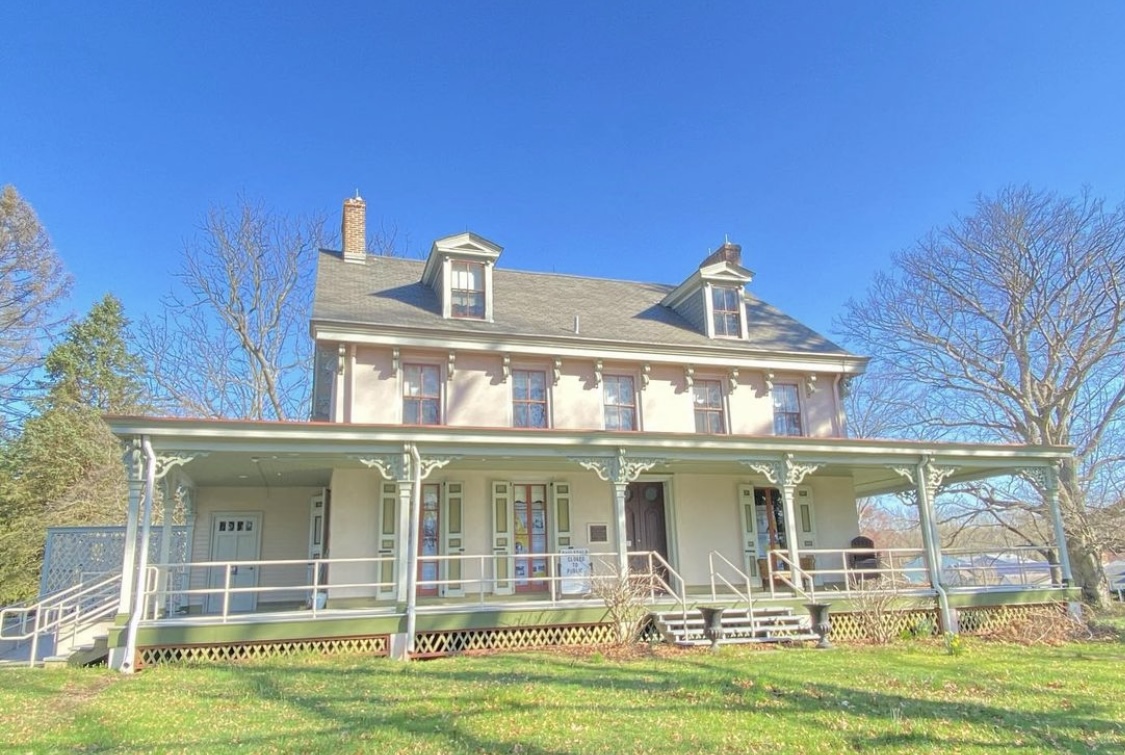By Brigid Heath, Rutgers University, History, Political Science, American Studies, and Women’s, Gender, and Sexuality Studies Major
Off a quiet street and down a gravel road in Mount Laurel, NJ, sits nobly, a three-story pink farmhouse possessing stories and charm of a different era than the suburban 1950s homes in the surrounding area.
Constructed circa 1800 by Benjamin Hooton, Paulsdale is the birthplace and family home of Alice Stokes Paul, suffragist, international women’s rights activist, and author of the Equal Rights Amendment. Paul founded the National Women’s Party and led the final charge toward winning a woman’s right to vote in the early 20th century.
The house was updated to the Victorian Style in the 1870s with the addition of French-style windows and a wrap-around porch with lattice work beneath it. In 1883, the Paul family purchased the home and surrounding farm, and two years later, Alice was born. Throughout her historic career, Paul would refer to it as her “home farm” and return from time to time to visit her mother in a place of quiet solace and reflection while she worked primarily in Washington, D.C.
Paulsdale and its surrounding farmland were sold after her brother’s death in 1958 and parceled into acres of farmland and the residence. The residence was owned privately for a few decades before the Alice Paul Centennial Foundation, incorporated in 1885, acquired it in 1990 and has occupied it ever since. In 1994, the Foundation shifted to become a nonprofit organization known as the Alice Paul Institute.
When the home was purchased, the dwelling was almost unchanged since Paul had lived there. The construction of a 1951 addition and the removal of a kitchen fireplace were the most notable changes. In 1991, Paulsdale was added to the National Register of Historic Places for its significance in political and social history, and in 1992, it also was designated a National Historic Landmark. Today, the house sits on six and a half acres of land and has been largely restored by the Institute to what it would have looked like when Alice lived there.
The continued care and preservation of Paulsdale and its designation as a historic place are good news for preservationists and all people who stand to benefit from its protection and the advancement of the Alice Paul Institute’s mission. Paulsdale provides an immersive setting through which visitors can learn about women’s history and the continued fight for intersectional and inclusive equality on the basis of sex. The museum entreats all those who enter to listen to Paul’s story and understand the mission she carried out and the legacy which her Institute continues to uphold. It serves as a place that enhances the public’s knowledge of and concern for human rights in the United States and globally. It promotes consideration and understanding of women’s social, political, and economic situation. Efforts for sustainable educational outreach and promoting women’s leadership programs are a foundation upon which the Institute was built. Their work and idealism reach far beyond the doors of Paulsdale itself.
In the interests of public health and safety, in-person visits and tours of the museum have been paused until further notice. Despite this unfortunate reality, the Alice Paul Institute provides access to a wealth of resources that can be explored remotely, including a virtual tour of a permanent exhibit on the YouTube channel: youtube.com/alicepaul1885. Those who want to learn more about Alice Paul and the programs that the Institute runs virtually can visit alicepaul.org or find them on Instagram @alicepaulinstitute or Twitter @AlicePaulInstit
*Reopening March 31, 2022 by appointment.
